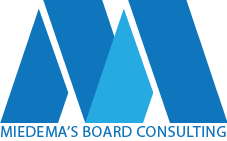Succession planning is a topic that most nonprofit board members would agree is a good idea but it often gets neglected or bumped off the agenda for more pressing issues. Given the financial and operational risks involved with being caught unprepared, it is worth making succession planning a priority.
There are four main scenarios to consider in a succession plan – planned and unplanned absences for both the short and long term. The board, or at the very least the Board Chair, should have a discussion with the CEO annually to update the plan. A succession plan includes an up-to-date job description, a checklist of who to notify in the event of a change, the location of key documents and an inventory list of key contacts, account numbers, passwords and any information that an interim person would need access to in the event of an unplanned absence. If the plan involves appointing an internal candidate as an interim or permanent replacement then a succession plan to back-fill their position should also be part of the plan. If the Board Chair is listed in the succession plan as the interim leader then a backup Board Chair must be prepared to step in so one person does not hold the CEO and Chair role (a situation ripe with actual and perceived conflict).
The Board’s Policy Manual should include the succession planning process and it needs to be an item on the board’s annual work plan. The policy can outline the scenarios which trigger the formation of a search committee and transition plan so decisions can be made quickly if they have to.
Another key element of succession planning is staff development. With the growing scarcity of candidates in the marketplace, it is a good business practice for the CEO to develop potential leaders from within the ranks. It is also a good human resource practice to grow and challenge staff to their full potential. The board can ensure this takes place by including staff development in the CEO’s job description and protecting the professional development budget.
Succession plans take some time to develop but once they are part of the culture they are easy to maintain. It is worth the effort because they strengthen and protect the organization while giving board members peace of mind.







